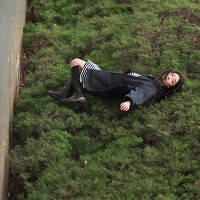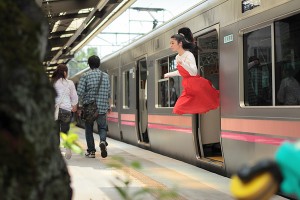
Anyone who watches crime shows on TV will have heard the whirring sound of someone clicking seemingly endless photographs of skid marks, broken glass, and bodies. In fact, more people than ever before know what forensic photography is: Photography used to record details at crime and accident scenes as part of the evidence-gathering process. It's no job for amateurs — except perhaps when a bystander* with a camera phone gets off a few shots before first responders arrive. Camera phone photos are being used as evidence in an increasing number of criminal and civil trials.
*) Just a random aside: if you are one of those bystanders, I would recommend you take your photos with a camera, and take the memory card out. In the UK, at least, police have the power to seize the evidence - by force if necessary - and you won't see your camera phone again until after the trial. If you witnessed something quite serious, you could be talking months. It's less painful to have to give up your memory card than your whole camera or phone.
I was lucky enough to be able to interview an UK crime scene investigator, C, whom I know via my role as a Special Constable in the Metropolitan Police. In the Met, we call them SOCO (Scene of Crime Officers), but the job is pretty much the same.
"The core role of a CSI is to attend crime scenes and identify, document and collect evidence.", C explains. "At one end of the scale it could be a criminal damage and at the other, a murder scene."
What's in a CSI's photo bag?
"I keep all of my kit in a Pelican Case.", C says, pointing to a sturdy-looking piece of kit on the floor. Pelican cases come in all sorts of shapes and sizes, but they have their absolutely incredible robustness (some would say 'bullet-proof', but that would probably be like swearing in church in presence of a Crime Scene Investigator) in common. They aren't cheap, but they can be had from Amazon (USA/UK) at reasonable prices.
"The Pelican case keeps everything protected", C says, and adds, laughing: "Another advantage is that it can also double as somewhere clean to sit."
C shows me the content in the case. I have to admit: Given the high-tech feel of forensics in general, I am a little bit disappointed. There's a Nikon D200, a 18-35mm lens, a 60mm Macro lens, four 512MB CF cards, an SB-800 flashgun and extension cable, a Metz 45 Flashgun a Quantam battery pack and extension cable and a shutter release cable. Packed into the lid of the case are various scales, stickers, a spare pair of gloves, and a white balance card.
"Unfortunately", C says wistfully, "I don't have any say in the equipment I'm using. The D200s were purchased before I arrived, and before that everyone was shooting with film. We've had the Nikon D200 cameras for a while now. They do the job very well, and with all the budget constraints I don't see this changing anytime soon."
"Don't get me wrong", C interjects, "I like all the equipment. I have to say, though, my favourite has to be the 60mm lens. It provides incredible detail."
The macro lens comes in particularly handy in certain situations. "Sometimes fingerprints cannot be lifted in the normal way", C explains, picking up the 60mm lens, and weighing it in his hands, "for example if they are in grease or blood. I use this lens to photograph fingerprints with a scale. It surprises me each time I do it."
Even though C has two different flashes at his disposal, he doesn't like using them much. "I don't like flash. I use it when I need to but if I can find another way then I always try that first.", he says. "When I attend someone's home address for injury photos, I'll always suggest we do it in the rear garden for example. This gives us the use of the natural light instead of the flash inside."
"On the more exotic scale of things, we have use of Ultra Violet photography. The UV can show up bruises and injuries that aren't visible to the naked eye or camera. This is particularly useful when photographing bite marks."
"We also have use of 'body mapping photography'. This is where we take a series of photographs at different angles of a person, usually deceased, and the injuries can be put onto a 3D digital model for court." Why would you bother, you might ask? Well, most importantly, it prevents having to show the actual photographs of a dead body in court.
At the crime scene
Crime scene investigators have a little bit of leeway in how they do their job, but the most important thing is to keep the audience for the photos in mind: It's the jury who will eventually convict - or acquit - the suspect of a crime.
"Some of the things I do make it easier at court when a jury or judge are looking at my photos.", C says, clearly passionate about getting this bit right. "They've never been to the scene and may not even know where it is. The trick is to take photos as if the viewers were walking through the scene. Each photo has something from the last photo in it, this helps join it all together."
"I use stickers with arrows on them, these indicate points of interest", C says, waving vaguely at the stickers in his Peli case. "I'll normally take a wide shot, another one closer to a subject and then a close up with the 60mm lens. I also use the distinctive yellow number markers."
The thing you see in the movies, with the gruff police officers saying "Nobody touch anything" as they cordon off a crime scene? Yeah, that's pretty accurate. "Nothing is moved in the scene until the photographs are taken", C says. "This means I can present a true and accurate record of the scene when I arrived. If I find something as I move items, then it's photographed as I go."
What's the job like?
"My job involves attending crime scenes - but some times I attend scenes where there isn't a crime involved. Sudden deaths and suicides are one example. I attend in order to ensure that there is no foul play and to document the scene for the Coroner."
"Sadly", C says, "people get an odd impression of what my job is from watching CSI and shows like that. Obviously, I don't have a gun - they don't even hand those out to the beat coppers here in England - but my van doesn't have lights and sirens either. Hell, I think my van is the least desirable of the whole fleet! Beats taking the bus though."
"I work a shift pattern, like most people in my office. The hours are between 0700-2200 every day of the week, every day of the year. Once or twice a week, I end up on call", C explains, "which is often after a late shift. When that happens, it means I am on call until 0700 the next morning".
It isn't all photography, the job of a CSI, either. "Some of the items I could be collecting are footwear impressions, fingerprints or items for DNA consideration.", C says, "There are many techniques for recovering these items."
Despite the perceived glamour around the job, Being a CSI isn't a particularly creative job. "I use to photograph weddings before this job and that was really creative", C laughs, takes a sip of his tea, and shares a couple of anecdotes about the daft things brides and bridesmaids get up to. Then, he goes a bit quieter: "My new job is quite different".
"Crime Scene Photography is record photography. Everything needs to be taken as if the person viewing the photo was actually at the scene. This is something I struggled with when I first started. I'd look at my photos and think 'What the heck is that!?' I have got used to it now". C doesn't miss the creative aspect of photography, however: "I can be creative when I use my camera at home!", he says.
The most challenging situations to photograph come from technical and non-technical angles. "Sometimes I may need to use balanced and reverse balance flash. That can sometimes get the cogs in my head turning slowly.", he smiles, miming the aforementioned slow-turning cogs with great precision.
The other obvious challenge with a job like this is the things you come across on your average work day. "I'm human", C assures me in a tone that makes me think that people have an odd tendency to forget that.
"I know that a lot of things I see are upsetting. One thing I am good at is not being emotionally involved with a job. I see all sorts of horrid things, but to me it's a career, a professional one", he says. "I see deceased adults, children, people with horrific injuries and things you'd never think possible. The trick is to remain professional and remember that people involved expect me to do a good job. So that's what I do."
"I'm happy to admit that I am a clean freak. I like everything to be organised and in its place", C says, with a serious expression on his face. Not hard to understand, perhaps - how organised C is will directly affect whether a criminal gets locked up behind bars, or walks out of the courthouse whistling a Lady Gaga tune."My van is one of the tidiest I've ever seen - and you should look at my fingerprinting case! It's immaculate!".
Between you and me, it's people like C that make working with the police that little bit more fun.
After the fact
"I'd say about 75% of the photos I take will end up in an album for court", C says, explaining where his photos fit into the grand scheme of things. "If I produce an album for court, then I also have to produce a statement. The statement will outline how I conducted my examination and what I recovered. I also state some observations I make at the scene too."
"If the defence indicate that they may wish to contest part of my evidence or question me in relation to it, then I will be warned that I have to come and be questioned in court". Being 'warned for court' is a phrase that gives any member of police staff the chills, as it isn't a pleasant thing, having a defence lawyer trying to shred apart anything you've said or done. "I have been warned a few times", C says, and gently taps the wooden chair he is sitting on, "but yet had to give evidence in this role".
"I love the spontaneity of my job", C says without hesitating for a split second, when asked why he's doing it. "Each day really is different. I could go on duty and have a number of jobs to attend when something happens and the day's plans go up in the air. I love being out of the office. Being stuck at a desk would drive me insane. The hard work pays off when I identify an offender, that's what it's all about".
After thinking for a moment, he adds, laughing - "Y'know what I really love? Catching the same guy for more than one job!"
To hopeful future CSI officers...
If you're interested in becoming a CSI, the first two things you should know is that it ain't like on the telly, but that it's a great job anyway.
"I'd never give it up for anything", C says.
"You've got to be motivated and dedicated. Once you start a scene, you've got to finish it", he says, with a shrug. Yes, that does mean that you're working horribly long hours from time to time. "Attention to detail is paramount. You'll need to have a strong stomach; you'll see lots of horrid things."
Of course, a solid interest in - or, even better, experience with - Science, Policing and or Photography will be a great help.
When a vacancy comes up, there will be hundreds of applicants. You'll need to set yourself out from the rest somehow.
About C
C prefers for his name not to be known. His name isn't C - that's short for CSI for the purpose of this interview - but he's a great guy, and I'm really grateful that he has helped me with this article.
C's a CSI for a large police force in the UK, but he has worked for the police in various other roles before, including being a Special Constable (like me!) for six years, with another force. He loves his job, and he loves talking about it, too - because a lot of people find it interesting, for obvious reasons.
If you liked this article, take a look at C's blog, and consider following him on Twitter - he tweets as @CSIguy01







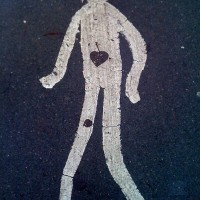

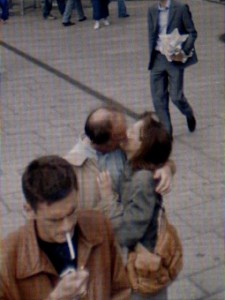


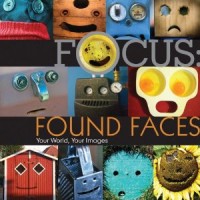
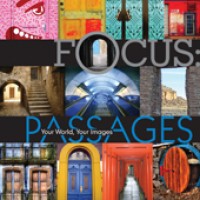


 Camera. Perhaps more than any other photographic discipline, sports photography requires a higher-end dSLR camera. Specifically, look for a camera that can capture at least four frames per second, has a buffer capable of holding at least 15 images and supports track- ing autofocus. Most dSLR cameras sold today support an ISO of 1000 and beyond and 1/4000 shutter speed or faster, which is plenty sensitive and fast enough for sports photography purposes. If it’s in the budget, and if you know you’ll be shooting in snow, near the water, or at outdoor events in which weather may be a factor, opt for a water-resistant camera, or even under- water housing for your camera body.
Camera. Perhaps more than any other photographic discipline, sports photography requires a higher-end dSLR camera. Specifically, look for a camera that can capture at least four frames per second, has a buffer capable of holding at least 15 images and supports track- ing autofocus. Most dSLR cameras sold today support an ISO of 1000 and beyond and 1/4000 shutter speed or faster, which is plenty sensitive and fast enough for sports photography purposes. If it’s in the budget, and if you know you’ll be shooting in snow, near the water, or at outdoor events in which weather may be a factor, opt for a water-resistant camera, or even under- water housing for your camera body. Monopod. Especially if you are working with large, heavy lenses, a monopod can help you steady your shot, not to mention alleviate arm fatigue!
Monopod. Especially if you are working with large, heavy lenses, a monopod can help you steady your shot, not to mention alleviate arm fatigue!

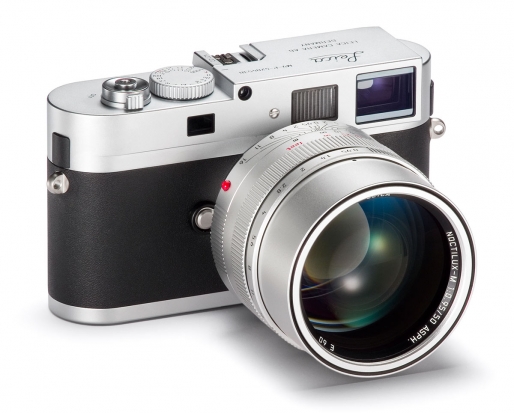



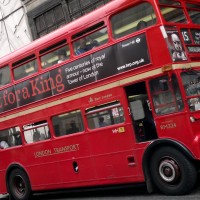
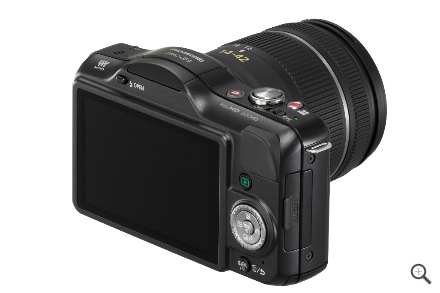


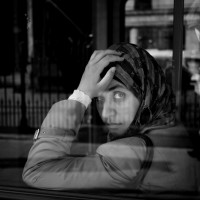

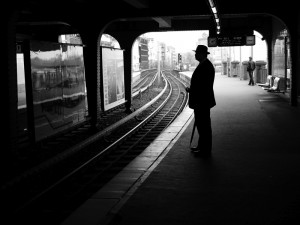
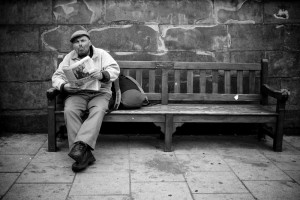
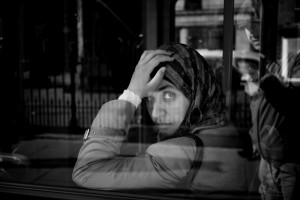
 What is this? - In our NewsFlash section, we share interesting tidbits of news. Think of it as our extended twitter feed: When we find something that get our little hearts racing, we'll share it with you right here! Loving it? Great, we've got
What is this? - In our NewsFlash section, we share interesting tidbits of news. Think of it as our extended twitter feed: When we find something that get our little hearts racing, we'll share it with you right here! Loving it? Great, we've got 